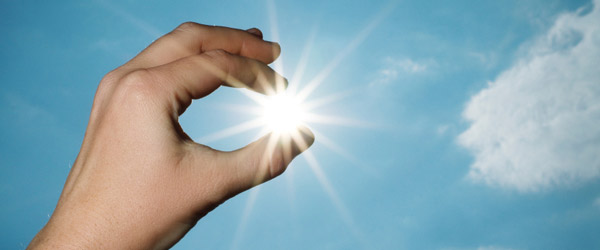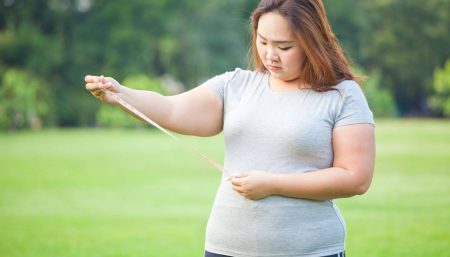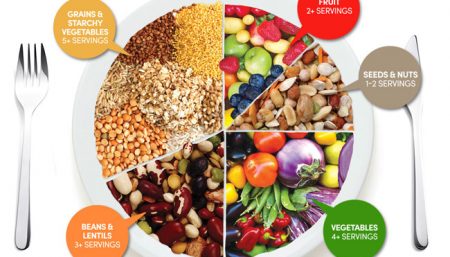
You don’t need to tan or to burn your skin in order to get the vitamin D you need. Exposing your skin for a short time will make all the vitamin D your body can produce in one day. In fact, your body can produce 10,000 to 25,000 IU of vitamin D in just a little under the time it takes for your skin to turn pink. You make the most vitamin D when you expose a large area of your skin, such as your back, rather than a small area such as your face or arms.
There are a number of factors that affect how much vitamin D your body produces when your skin is exposed to sunlight. These include the time of year and time of day, where you live in the world and the type of skin you have.
The amount of vitamin D you get from exposing your bare skin to the sun depends on:
- The time of day – your skin produces more vitamin D if you expose it during the middle of the day.
- Where you live – the closer to the equator you live, the easier it is for you to produce vitamin D from sunlight all year round.
- The color of your skin – pale skins make vitamin D more quickly than darker skins.
- The amount of skin you expose – the more skin your expose the more vitamin D your body will produce.
- The time of year and time of day
When the sun’s rays enter the Earth’s atmosphere at too much of an angle, the atmosphere blocks the UVB part of the rays, so your skin can’t produce vitamin D. This happens during the early and later parts of the day and during most of the day during the winter season.
The closer to midday you expose your skin, the better this angle and the more vitamin D is produced. A good rule of thumb is if your shadow is longer than you are tall, you’re not making much vitamin D. In winter, you’ll notice that your shadow is longer than you for most of the day, while in summer, your shadow is much shorter for a good part of the middle of the day.
The further you live away from the equator, the less vitamin D you can make during the winter, if at all.
The equator is an imaginary line on the Earth’s surface halfway between the North Pole and South Pole, which divides the Earth into the Northern Hemisphere and Southern Hemisphere. The further away you are from the equator, the more of an angle the sun will hit the atmosphere at, and the less UVB there will be available for you to produce vitamin D, particularly during the winter time.
In the summer, when the Earth rotates, the angle improves and more UVB reaches the places far away from the equator, allowing you to produce vitamin D outside of winter months.
For example, in the southern United States, in places like Florida, your body can produce vitamin D most of the year, while in more northern places, like New York City or Boston, you can’t produce much vitamin D from November through March. If you live even further north, like in Edmonton, Canada, you can’t produce vitamin D from October through
April. These times are even longer (by a month or two) if you’re skin type is darker.
Women living in the Southern Hemisphere
In Buenos Aires, you can’t produce vitamin D in June. In Cape Town, you can’t produce much vitamin D between mid-May and August. If you live as far south as the bottom tip of Chile and Argentina, you can’t produce vitamin D April through October! If you’re skin is darker, these windows are even longer by a month or two.
Women living in Johannesburg can produce vitamin D all year round.
Your skin type
Melanin is a substance that affects how light or dark your skin color is. The more melanin you have, the darker your skin color. The amount of melanin you have in your skin affects the amount of vitamin D you can produce.
Melanin protects against skin damage from too much UVB exposure, so darker skins with more melanin allow less UVB to enter the skin. With less UVB getting through the skin, less vitamin D is produced each minute. This is why if you’re dark skinned, you need more sun exposure to make vitamin D than if you’re fair skinned.
The paler your skin type the more easily your skin can produce vitamin D. So, if you have skin type I to III, you produce vitamin D more quickly than if you have skin type IV to VI.
For example, if you have skin type I, it might take around 15 minutes of sun exposure to get the vitamin D you need, while if you have skin type V or VI, it might take up to six times longer (up to 2 hours).
Because of all these factors – your skin type, where you live and the time of day or season – it can be difficult to work out how much time you need to spend exposing your skin to the sun in order to get the vitamin D you need. A good rule of thumb is to get half the sun exposure it takes for your skin to turn pink to get your vitamin D and expose as much skin as possible.

It can get complicated
Specific recommendations are not easy! Skin types are different and depending on the day of year, place and time of day, recommendations vary. Let’s see how complicated it can get if we expose a quarter of our body to the sun:
- At noon in Miami, an individual with skin type III would probably need about 6 minutes of exposure to the sun to make 1,000 IU of vitamin D in summer and 15 minutes in winter.
- Someone with skin type V would probably need around 15 minutes in summer and 30 minutes in winter.
- At noon in Boston during summer, an individual with skin type III would probably need about 1 hour of exposure to the sun to make 1,000 IU of vitamin D.
- Someone with skin type V would probably need about 2 hours of exposure.
- During the winter months in Boston, it’s not possible for anyone to make vitamin D from the sun, no matter their skin type.
- And that’s assuming you’re exposing a quarter of your body. As you can see, there are lots of things that factor into vitamin D production. The best recommendation is to get half the sun exposure it takes for your skin to turn pink.
Other factors
There are other factors which can affect the amount of vitamin D your body makes from exposure to the sun. These are:
- The amount of skin you expose. The more skin you expose, the more vitamin D you can produce.
- How old you are. As you get older, your skin has a harder time producing vitamin D.
- Whether you’re wearing sunscreen. Sunscreen blocks a lot of vitamin D production.
- The altitude you’re at. The sun is more intense on top of a mountain than at the beach. This means you make more vitamin D the higher up you are (at higher altitudes).
- Whether it is cloudy. Less UVB reaches your skin on a cloudy day and your skin makes less vitamin D.
- Air pollution. Polluted air soaks up UVB or reflects it back into space. This means that if you live somewhere where there is lots of pollution, your skin makes less vitamin D.
- Being behind glass. Glass blocks all UVB, so you can’t make vitamin D if you’re in sunlight, but behind glass.
Indoor tanning
Your skin can also make vitamin D if you use an indoor tanning bed. As with natural sunlight, making the vitamin D you need from a tanning bed happens within minutes. You don’t need to tan your skin, or use a tanning bed for a long time to get the vitamin D you need.
If you choose to use a tanning bed, the Vitamin D Council recommends using the same common sense you use in getting sunlight. This includes:
Getting half the amount of exposure that it takes for your skin to turn pink.
Using low-pressure beds that has good amount of UVB light, rather than high-intensity UVA light.
Exposing your skin to UVB and the risk of skin cancer
Exposing your skin to the sun for too long, so that your skin starts to burn can be dangerous. This is because it can increase your risk of developing skin cancers. Research to date shows that moderate but frequent sun exposure is healthy but overexposure and intense exposure can increase your risk of skin cancer.
After you have exposed your skin for half the time it takes for you to turn pink, cover up with clothing and go into the shade. Using sunscreen is not as recommended as using shade and clothing to protect your skin, because it hasn’t consistently been shown to prevent all types of skin cancers. But if you do want to use sunscreen, use a sunscreen that blocks both UVA light and UVB light.

Protecting the skin
While covering up to prevent too much sun exposure is an important step in protecting yourself from skin cancer, research has not always shown that sunscreen is the safest and most effective method.
Research has shown that sunscreen helps prevent squamous cell carcinoma, but has no effect in preventing basal cell carcinoma. For melanoma, research has been contradictory.
Some research shows that sunscreen prevents melanoma, while other research shows that it increases your chance of getting melanoma.
For these reasons, the Vitamin D Council believes that covering up with clothing and/or going into the shade (after you get a little bit of sun exposure), is a safer way to protect yourself from too much sun exposure.
Infants have delicate skin which burns more easily, so it’s important to use extra care with your baby. This is why most doctors recommend giving your infant vitamin D supplement and not exposing your baby’s skin to the sun at all. See our pregnancy and breastfeeding page for more information on how to get the vitamin D your baby needs.
For older children, the advice is the same as for adults. You can expose your child’s skin for half the time it takes to burn in order to get the vitamin D they need. After that, make sure they cover up with clothes, shade and if you wish, sunscreen.
If you have had skin cancer or if you’re worried about exposing your skin to the sun, or that of your child, you can take vitamin D supplements instead.
Vitamin D supplements
In the 21st century, it’s hard to get daily full body sun exposure. On the days that you can’t get enough sun exposure, taking a supplement is an effective way to get the vitamin D your body needs. It‘s also a good way to get vitamin D if you’re worried about exposing your skin to the sun.
Women need for vitamin D
Different organizations recommend different daily intakes. Here are the recommendations from some organizations in the United States:
Recommended daily intakes from various organizations:
| Vitamin D Council | Endocrine Society | Food and Nutrition Board | |
| Infants | 1,000 IU/day | 400-1,000 IU/day | 400 IU/day |
| Children | 1,000 IU/day per | 1,000 IU/day per 25lbs of body weight | 600 IU/day |
| Adults | 5,000 IU/day | 1,500-2,000 IU/day | 600 IU/day, 800 IU/day for seniors |
The Food and Nutrition Board recommended daily intakes are the official recommendations by the United States government.
Why are the recommendations so different? Some researchers believe that there isn’t enough evidence to support taking higher amounts of vitamin D yet. On the other hand, some researchers believe that research is proving, or will prove, that taking lower amounts isn’t enough.
Disclaimer
The Content is not intended to be a substitute for professional medical advice, diagnosis, or treatment. Always seek the advice of your physician or other qualified health provider with any questions you may have regarding a medical condition.



